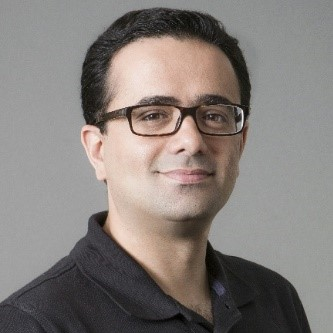Computational Methods in Imagery (CMI)
A special issue of Sensors (ISSN 1424-8220). This special issue belongs to the section "Sensing and Imaging".
Deadline for manuscript submissions: closed (28 February 2022) | Viewed by 23408
Special Issue Editors
2. Computer Vision and System Laboratory (CVSL), Department of Electrical and Computer Engineering, Laval University, Quebec City, QC, Canada
Interests: infrared hyperspectral imagery; pattern recognition; machine learning
Special Issues, Collections and Topics in MDPI journals
Interests: microwave remote sensing; applied and computational electromagnetics; radar remote sensing; inverse models and algorithms for environmental and Earth science applications
Special Issues, Collections and Topics in MDPI journals
Interests: Numerical Analysis; Applied Mathematics; Mathematics of Signal Processing
Interests: building heritage; building pathology; infrared thermography; hygrothermal behaviour of buildings; energy efficiency; thermal comfort; numerical modelling; heat transfer; optical metrology; composite materials; NDT
Special Issues, Collections and Topics in MDPI journals
Interests: NDT; health diagnostics; non-invasive imaging; autonomous systems inspections; composites; structures; thermal imaging; monitoring
Special Issues, Collections and Topics in MDPI journals
Special Issue Information
Dear Colleagues,
The importance of computational imaging techniques is unequivocally recognized in industries for a variety of applications, including medical, environmental, and security applications. Many techniques have been developed to strengthen previous approaches by improving the computational time, safety (quality control and monitoring), accuracy, reliability, and computational time. Such methods are considerably attractive to scientists, engineers, and those in various industries. This Special Issue, “Computational Methods in Imagery (CMI)” focuses on development, comparison, and application of sensors in image analysis, mathematical methods, and laboratory and in-situ measurements. The subjects include, but are not limited to, the following:
- Computational image processing methods, models, and algorithms.
- Machine learning and pattern recognition approaches in infrared and thermography.
- Medical imaging for diagnostic and prognostic assessments.
- Enhanced experimental methodologies involving different excitation ways such as mechanical, laser, optical, and inductive.
- Numerical modelling integrated with experimental tests.
- Applications in radar remote sensing, environmental and Earth science, imaging-based material evaluation, art and cultural heritage, archeology, and advanced industrial applications.
Dr. Bardia Yousefi
Dr. Alireza Tabatabaeenejad
Dr. Antonio Cicone
Dr. Stefano Sfarra
Prof. Dr. Nicolas P. Avdelidis
Guest Editors
Manuscript Submission Information
Manuscripts should be submitted online at www.mdpi.com by registering and logging in to this website. Once you are registered, click here to go to the submission form. Manuscripts can be submitted until the deadline. All submissions that pass pre-check are peer-reviewed. Accepted papers will be published continuously in the journal (as soon as accepted) and will be listed together on the special issue website. Research articles, review articles as well as short communications are invited. For planned papers, a title and short abstract (about 100 words) can be sent to the Editorial Office for announcement on this website.
Submitted manuscripts should not have been published previously, nor be under consideration for publication elsewhere (except conference proceedings papers). All manuscripts are thoroughly refereed through a single-blind peer-review process. A guide for authors and other relevant information for submission of manuscripts is available on the Instructions for Authors page. Sensors is an international peer-reviewed open access semimonthly journal published by MDPI.
Please visit the Instructions for Authors page before submitting a manuscript. The Article Processing Charge (APC) for publication in this open access journal is 2600 CHF (Swiss Francs). Submitted papers should be well formatted and use good English. Authors may use MDPI's English editing service prior to publication or during author revisions.










